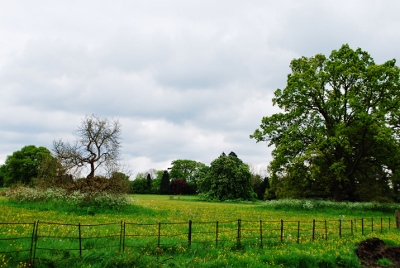Controversial Thame housing plans amended
On 20/01/2015 At 12:39 am
Category : Missed a ThameNews story?, More News, Thame news
Responses : No Comments
PROPOSALS for a controversial housing development on land at The Elms, Upper High Street, Thame, have been re-submitted with amendments, including a reduction in the number of new homes from 45 to 37, 14 of which are ‘affordable’ – four less than in the original plan.
Other amendments include moving a row of houses further back from the boundary between The Elms and Elms Park, and planting trees for screening; changes to the housing mix and layout; changes to parking provision and layout; cycle paths provided from Elms Road, Elms Park and the Upper High Street and reduction of some roof levels. These changes reflect responses to a number of concerns, including those of the South East Regional Historic Buildings Officer from English Heritage, the Conservation Officer at South Oxfordshire District Council, Thame Town Council and local residents.
WILDLIFE
An Ecology addendum has been added to the Plans, following an ‘Ecology and Protected Species Appraisal’ commissioned by the developer after concerns were voiced regarding the possible adverse effect of the development on Great Crested newts. The report concludes that the areas around the three near-by ponds, one at John Hampden School, and the others in the Memorial Gardens (the former only marginally suitable for newts and the latter unsuitable because of their over-hanging lips) to be an unnecessary concern.
On the effect of invertebrate biodiversity by the proposed felling of a horse chestnut tree and a sycamore tree, the report says that no significant loss can be expected because most trees on the site are being retained. On the question of bats, the report states that there are no bat roosts present in the trees at the moment but that, as the development is unlikely to begin for three years, it recommends checking the trees for bat roosts before felling. If, at that time roosts are found, felling would have to be delayed until appropriate licences had been gained from Natural England.
The Appraisal concludes: “Most of the site area is of low ecological value….any of note is being retained and safe-guarded within the Master Plan.”
CHANGES TO BOUNDARIES
Additional amendments include partial demolition of the boundary wall along Elms Road, creations of a vehicular entrance, new plinths, metal railings and brick piers; Removal of the wooden gates at the Upper High Street entrance and provision of timber, electronic gates at the private entrance to The Elms; Moving the Southern access to the site 4.5 m to the East along Elms Road ‘to ensure minimum impact’ on trees and roots.
HERITAGE STATEMENT
It is in this area that there still appear to be unresolved differences between the developer and English Heritage, and the Conservation Officer who had previously stated: “There would be undeniable harm to the setting of The Elms….and the other nearby Listed Buildings, and the Conservation Area as a result of development on this site,” and suggested that open space should be increased. The revised scheme amendments include that the park-side houses are reduced from 14 to 11 in number, thus increasing the space between them.
Differences remain between the applicant (Simon Vickers, Rectory Homes) and English Heritage regarding the setting of the development within land at The Elms, in particular its relationship with the open pasture land to the South. English Heritage, states the amendment documentation, has said that land to the South and West of the house ‘holds a greater degree of significance than the remainder of the pastureland’.
In a recent statement to Thame.Net (See previous report), English Heritage said that it was not able to support the plans as they currently stood as ‘they would contravene the agreed Neighbourhood Plan and be harmful to the setting of this important historic listed building’. There is also some dispute over the historic land ownership which the amendment documentation suggests can probably never be proved conclusively.
English Heritage has concluded: “It is the current sense of tranquility and seclusion (which) should be regarded as making a positive contribution to the setting of building.”
The applicant’s amendment concludes: “Public benefit offsets the notional degree of harm alleged.”
English Heritage has recommended to the Planning authority, South Oxfordshire District Council, that it refuse the application.
 The plans can be viewed on request at Thame Town Hall Information Centre. Electronic copies of the plans are currently unavailable as the SODC website is down due to a major fire at their main offices but should be available online on the Town Council’s website next week. The application will be considered by the Town Council on Tuesday, February 27, 2015.
The plans can be viewed on request at Thame Town Hall Information Centre. Electronic copies of the plans are currently unavailable as the SODC website is down due to a major fire at their main offices but should be available online on the Town Council’s website next week. The application will be considered by the Town Council on Tuesday, February 27, 2015.
You can read all previous reports and communications to Thame.Net relating to the proposed development at The Elms, HERE


